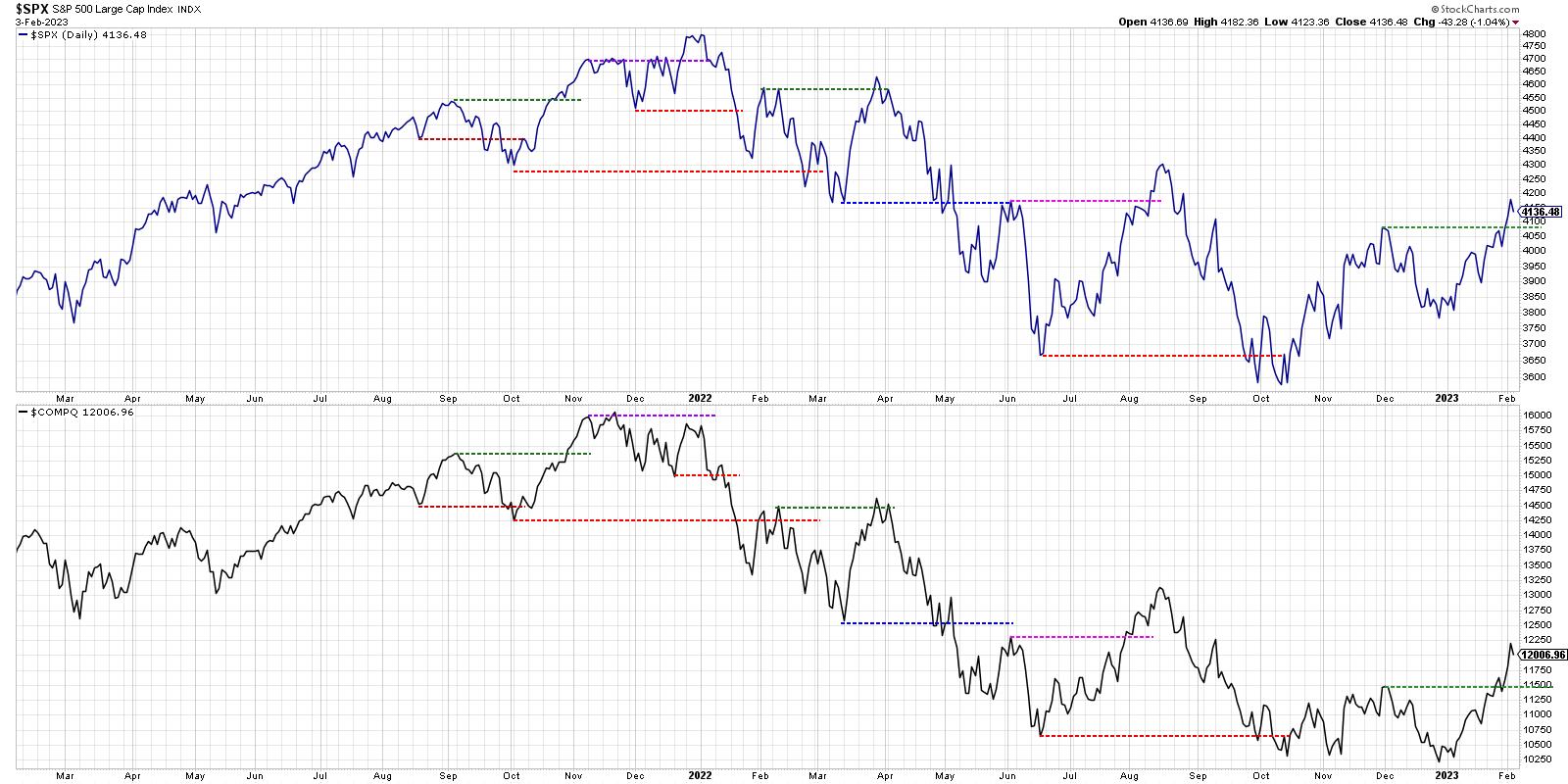While the technical analysis toolkit has certainly evolved over time as it has benefited from advances in computer and data analysis, in many ways the modern technical analyst’s tools are not far from the original work of Charles Dow of the removed early 20th century. But an updated version of his classic “Dow Theory” suggests markets have entered a new bullish phase as both the S&P 500 and Nasdaq make new swing highs.
Dow’s fundamental market analysis
To be clear, Dow’s work was done entirely with paper and pencil, a practice that for many technical analysts (or “chartists,” as Ralph Acampora was fond of telling me, continued well into the 1980s, as they spent most of their time creating charts instead of analyzing them!).
One of Charles Dow’s contributions was so significant that we now call it simply the “Dow Theory.” He suggested looking at two indices, the Dow Industrials and the Dow Railroads (which has since evolved into the Dow Transports), and see if they agree. When both indices made new highs, the market was strong. When both indices made new lows, the market was weak. If there was a non-confirmation where one of the indices broke out but the other didn’t, then that indicated a possible turning point. His theory was based on the importance of these two groups – the industrialists as producers of goods and the railroads as distributors of goods – as a way of assessing the strength of the economy.
Dow Theory for Modernity
Now in 2023, the Dow Industrials includes a fairly diverse group of companies classified as service-oriented rather than product-oriented. And the Dow Transports includes stocks like JetBlue and Avis Budget Car Group. Not really the merchants of goods. Also, perhaps most importantly, names like TGT and AMZN, which are arguably intended to be included in both indices, are actually not in either of them!
So now I prefer to use a new Dow theory and compare the S&P 500 (representing the old economy) and the Nasdaq Composite (the new economy). When both indices are in uptrends, the market is strong.
What strikes me most about this chart is the bearish non-confirmation that occurred in late 2021. Notice how the S&P 500 hit a new all-time high while the Nasdaq Composite hit a lower high?
This pattern indicated that the breakout was suspect for the SPX and should be faded, not bought. To be honest, this was one of many divergences you will find during this period, along with losing momentum, decreasing breadth and a lower high for small caps.
New Dow theory in February 2023
Both the S&P 500 and the Nasdaq Composite hit fresh 52-week lows in October last year, providing bearish confirmation. Then, in December, the Nasdaq continued to make lower lows while the S&P 500 bounced higher to make a higher low before year-end. This was a bullish non-confirmation, with one index making a new low but the other not confirming the bearish setup. This suggests that the bear market phase of 2022 was at a potential turning point.
Here in February 2023, you’ll see both indices making new swing highs as they surpassed their December 2022 highs. I would consider this a bullish confirmation, with both the old economy and new economy indices being confirmed in a new uptrend.
Both the S&P 500 and Nasdaq face significant overhead resistance. Until we see the S&P 500 rise above its August 2022 high at around 4300 and the Nasdaq above its own August 2022 high at around 13,000, then the upside potential for stocks beyond current levels may be limited.
“Don’t fight the bond.” I was told that early in my career. And the New Dow theory suggests that the band tells us that stocks are going forward and always up. Combined with new power in Latitude indicators like the McClellan oscillatorwe have a strong start to 2023 for the S&P 500!
RR#6,
David
hp Are you ready to improve your investment process? look at mine Free Behavioral Investing course!
David Keller, CMT
chief market strategist
StockCharts.com
Disclaimer: This blog is for educational purposes only and should not be construed as financial advice. The ideas and strategies should never be used without first assessing your own personal and financial situation or without consulting a financial professional.
At the time of publication, the author has no position in the securities mentioned. All opinions expressed herein are solely those of the author and in no way represent the views or opinions of any other person or entity.

David Keller, CMT is Chief Market Strategist at StockCharts.com, where he helps investors minimize behavioral biases through technical analysis. He is a frequent presenter on StockCharts TV and links mindfulness techniques to investor decision-making on his blog, The Mindful Investor. David is also President and Chief Strategist at Sierra Alpha Research LLC, a boutique investment research firm focused on risk management through market awareness. He combines the strengths of technical analysis, behavioral finance and data visualization to identify investment opportunities and enrich advisor-client relationships.
Learn more





